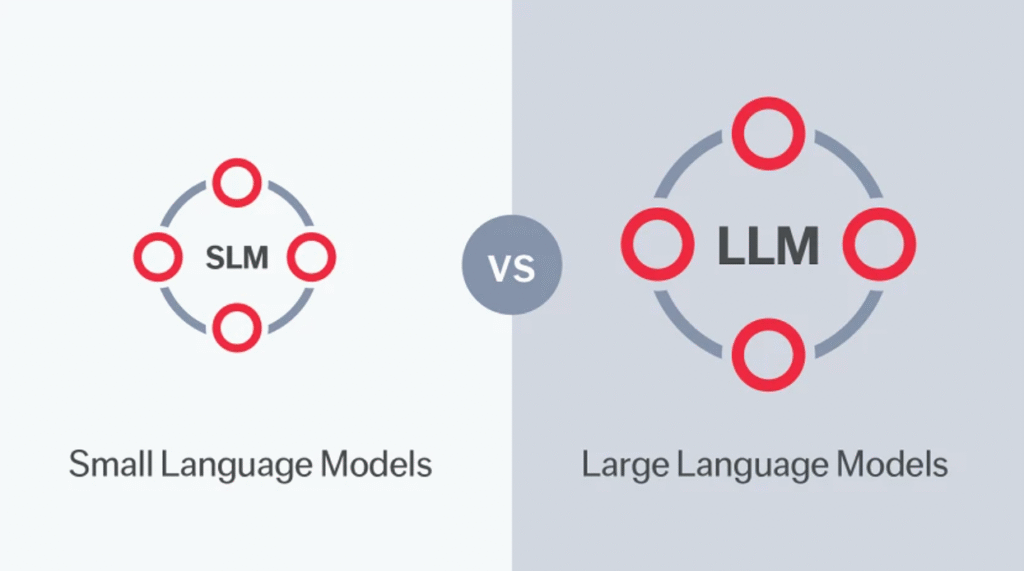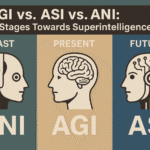Artificial Intelligence (AI) language models have transformed how we interact with technology, powering everything from chatbots to content generation tools. Two prominent categories in this space are Large Language Models (LLMs) and Small Language Models (SLMs). While both serve similar purposes, their differences in size, performance, and use cases make them suited for distinct applications. This blog post explores the key distinctions between LLMs and SLMs to help you understand their strengths and limitations.
What Are LLMs and SLMs?
Large Language Models, or LLMs, are AI models with billions of parameters, trained on vast datasets to perform complex tasks like natural language understanding, text generation, and reasoning. Examples include models like GPT-4, LLaMA, and Grok (created by xAI). These models excel at handling diverse, open-ended queries and producing human-like responses.
Small Language Models, or SLMs, are more compact, with fewer parameters—typically in the range of millions to a few billion. They are designed for efficiency, targeting specific tasks or deployment on resource-constrained devices. Examples include models like DistilBERT, TinyLLaMA, and Phi-2.
Key Differences Between LLMs and SLMs
Model Size and Parameters
LLMs are defined by their massive scale, often containing tens or hundreds of billions of parameters. This allows them to capture intricate patterns in language and perform well across a wide range of tasks. However, their size demands significant computational resources, making them expensive to train and deploy.
SLMs, by contrast, are lightweight, with parameter counts ranging from a few million to a few billion. Their smaller size reduces computational requirements, enabling them to run on less powerful hardware, such as mobile devices or edge servers.
Performance and Capabilities
LLMs shine in tasks requiring deep contextual understanding, reasoning, and creativity. They can generate coherent long-form content, answer complex questions, and even perform tasks like code generation or translation with high accuracy. Their extensive training data allows them to generalize across diverse domains.
SLMs are optimized for specific tasks, such as sentiment analysis, text classification, or simple chat applications. While they may not match LLMs in versatility or reasoning, they can achieve comparable performance in targeted scenarios with proper fine-tuning. Their focused design makes them less prone to overkill for straightforward applications.
Resource Efficiency
Training and deploying LLMs require substantial computational power, often relying on high-end GPUs or TPUs and large-scale cloud infrastructure. This makes them costly and energy-intensive, limiting their accessibility for smaller organizations or individual developers.
SLMs are far more resource-efficient. They can be trained and deployed on modest hardware, including laptops or embedded systems. This efficiency reduces costs and energy consumption, making SLMs an attractive option for businesses with limited budgets or sustainability goals.
Training and Fine-Tuning
LLMs require massive datasets and prolonged training periods, often taking weeks or months on specialized hardware. Fine-tuning an LLM for a specific task can also be resource-heavy, though techniques like transfer learning can streamline the process.
SLMs, due to their smaller size, are quicker and cheaper to train. Fine-tuning is more accessible, allowing developers to adapt SLMs to niche tasks with smaller datasets. This makes SLMs ideal for rapid prototyping or deployment in specialized applications.
Deployment and Accessibility
Deploying LLMs typically requires cloud-based infrastructure or dedicated servers due to their high memory and processing demands. This can introduce latency in real-time applications and may raise concerns about data privacy when using third-party cloud services.
SLMs are well-suited for on-device deployment, enabling offline functionality and reducing latency. Their compact size makes them ideal for mobile apps, IoT devices, or edge computing, where low power consumption and real-time performance are critical.
Cost Considerations
The computational demands of LLMs translate to higher costs for training, deployment, and maintenance. Organizations must invest in robust infrastructure or pay for cloud services, which can be prohibitive for smaller teams.
SLMs offer a cost-effective alternative. Their lower resource requirements reduce both upfront and operational costs, making them accessible to startups, individual developers, or organizations with limited budgets.
Use Cases and Applications
LLMs are the go-to choice for applications requiring broad knowledge and complex reasoning, such as virtual assistants, automated content creation, and advanced research tools. For example, a model like Grok can handle diverse queries, from explaining scientific concepts to generating creative stories.
SLMs excel in scenarios where efficiency and specificity are paramount. They are commonly used in mobile apps, real-time chatbots, or embedded systems. For instance, an SLM could power a customer service bot tailored to a specific industry or a voice assistant on a low-power device.
Trade-Offs and Choosing the Right Model
The choice between an LLM and an SLM depends on your project’s goals and constraints. LLMs are ideal when you need versatility, high accuracy, and the ability to handle complex, open-ended tasks. However, their resource demands make them overkill for simpler applications.
SLMs are perfect for targeted tasks, resource-constrained environments, or cost-sensitive projects. While they may lack the generalization of LLMs, their efficiency and ease of deployment make them a practical choice for many use cases.
The Future of LLMs and SLMs
As AI continues to evolve, both LLMs and SLMs will play critical roles. Advances in model compression, quantization, and efficient training techniques are making SLMs increasingly powerful, narrowing the performance gap with LLMs. Meanwhile, LLMs are pushing the boundaries of AI capabilities, enabling breakthroughs in reasoning and multimodal applications.
In the coming years, we may see hybrid approaches that combine the strengths of both. For example, an SLM could handle lightweight tasks on-device, while an LLM in the cloud tackles more complex queries when needed. This synergy could democratize AI, making it more accessible and sustainable.
Conclusion
LLMs and SLMs represent two sides of the AI language model spectrum, each with unique strengths. LLMs offer unparalleled performance for complex tasks but come with high costs and resource demands. SLMs prioritize efficiency and accessibility, making them ideal for specific, resource-constrained applications. By understanding their differences, you can choose the right model for your project, whether you’re building a cutting-edge AI tool or a lightweight chatbot. As AI technology advances, both LLMs and SLMs will continue to shape the future of human-machine interaction.


